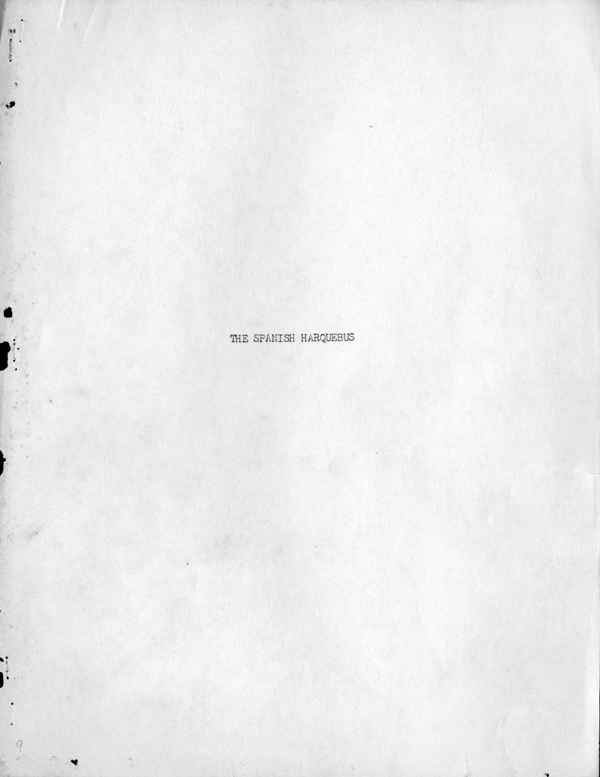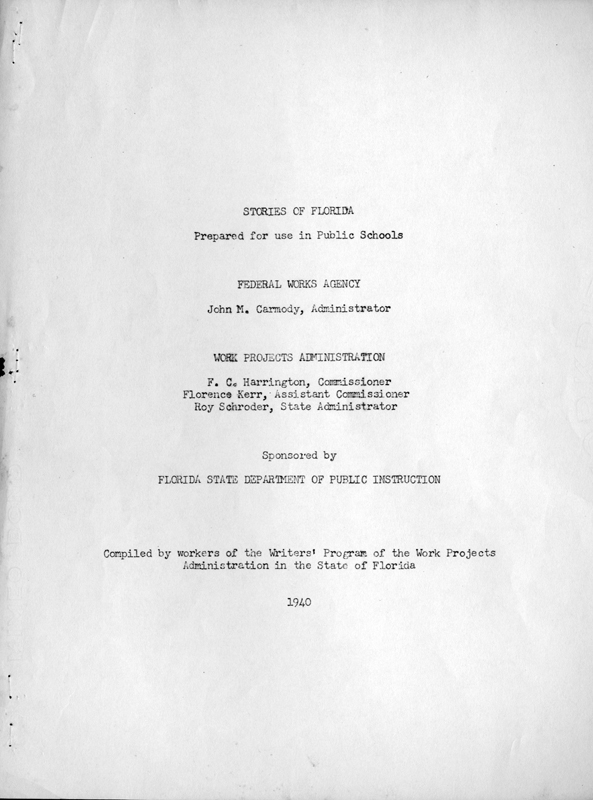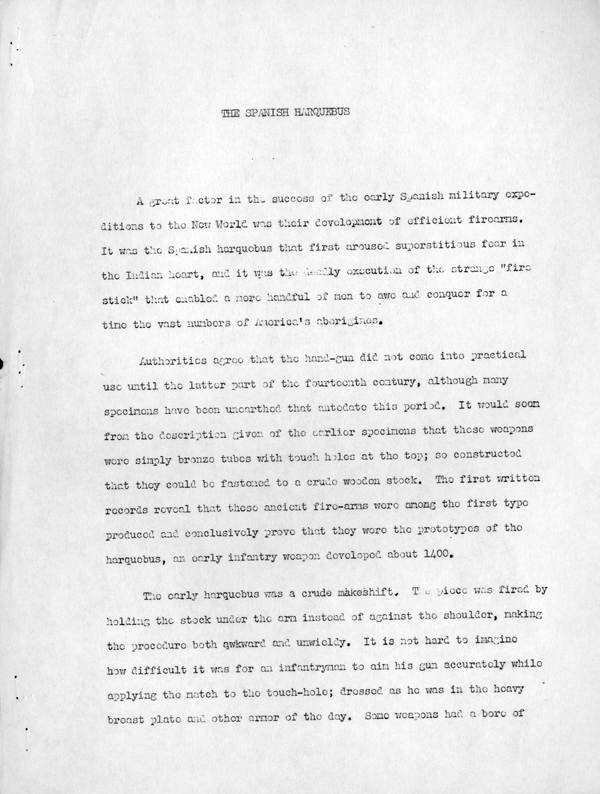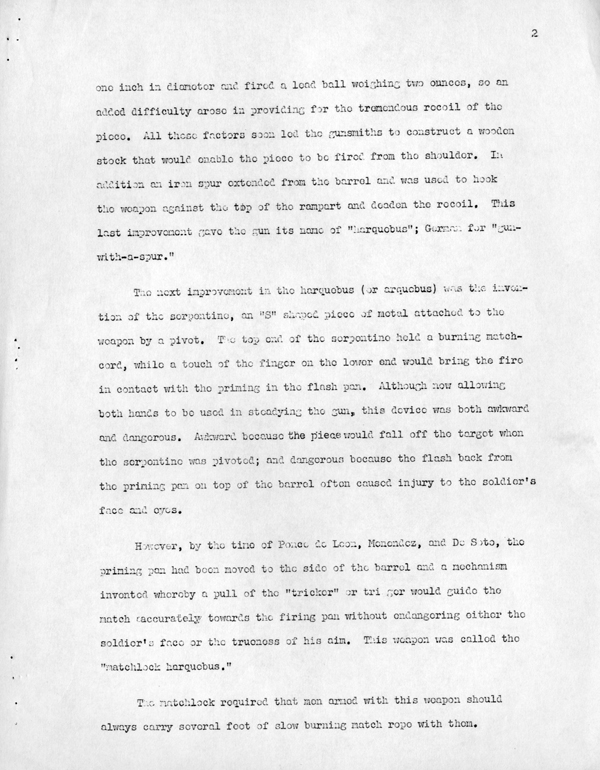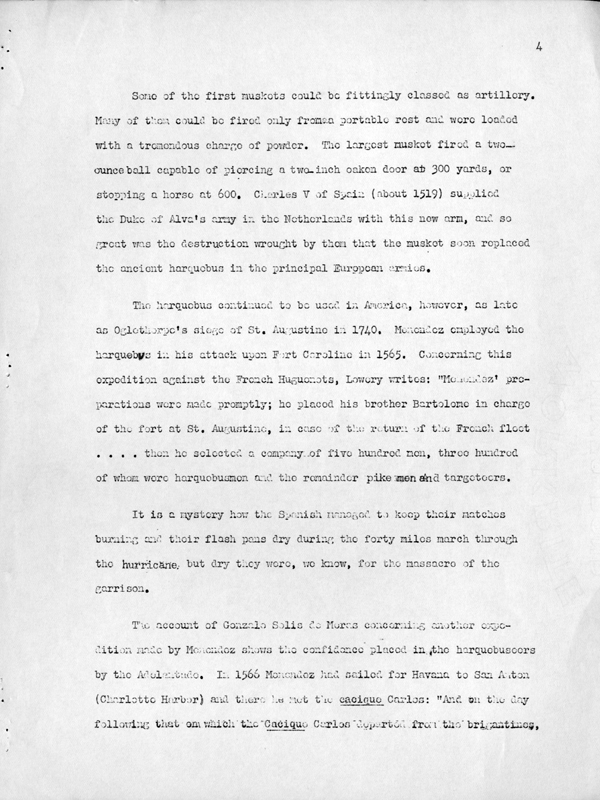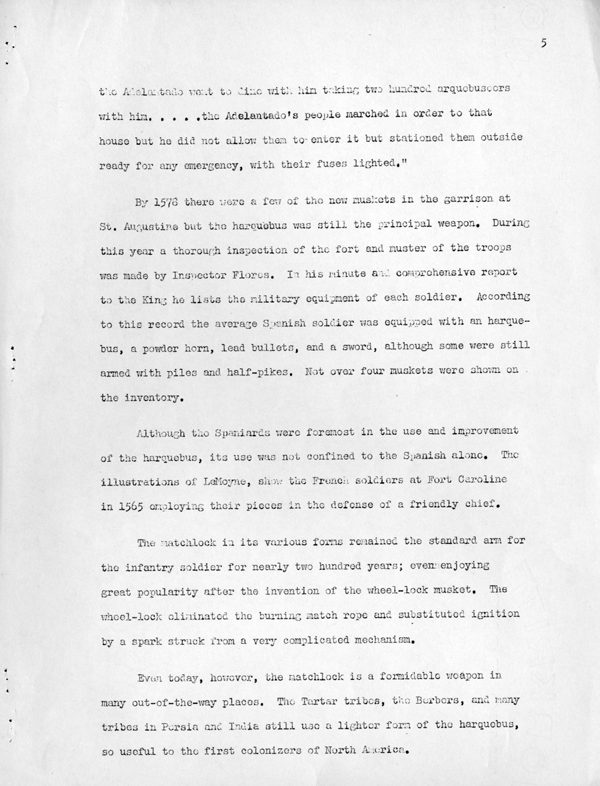Florida Memory is administered by the Florida Department of State, Division of Library and Information Services, Bureau of Archives and Records Management. The digitized records on Florida Memory come from the collections of the State Archives of Florida and the special collections of the State Library of Florida.

State Archives of Florida
- ArchivesFlorida.com
- State Archives Online Catalog
- ArchivesFlorida.com
- ArchivesFlorida.com
State Library of Florida
Related Sites
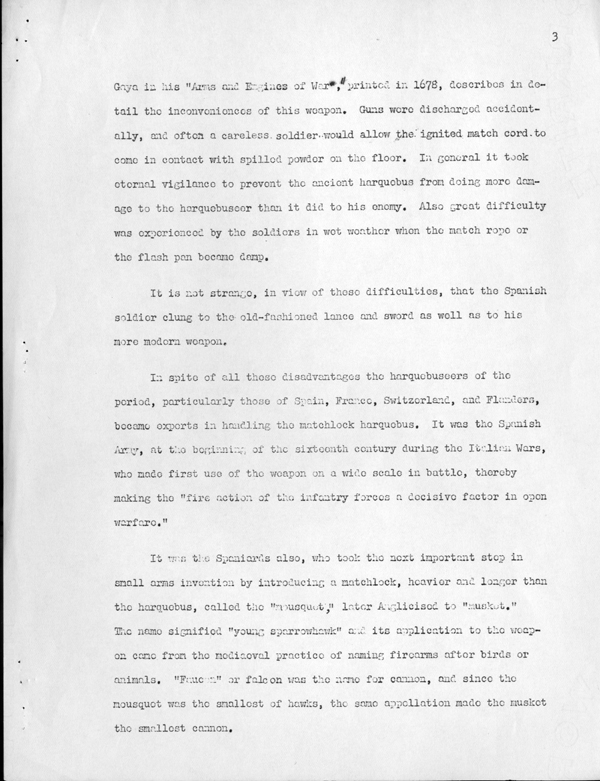
Description of previous item
Description of next item

Title
Published Date
Gaya in his "Arms and Engines of War," printed in 1678, describes in
detail the inconveniences of this weapon. Guns were discharged
accidentally, and often a careless soldier would allow the ignited match
cord to come in contact with spilled powder on the floor. In general it
took eternal vigilance to prevent the ancient harquebus form doing more
damage to the harquebusier than it did to his enemy. Also great
difficulty was experienced by the soldiers in wet weather when the
match rope or the flash pan became damp.
It is not strange, in view of these difficulties, that the Spanish
soldier clung to the old-fashioned lance and sword as well as to his more
modern weapon.
In spite of all these disadvantages the harquebusiers of the
period, particularly these of Spain, France, Switzerland, and Flanders,
became experts in handling the matchlock harquebus. It was the Spanish
Army, at the beginning of the sixteenth century during the Italian Wars,
who made first use of the weapon on a wide scale in battle, thereby
making the "fire action of the infantry forces a decisive factor in open
warfare."
It was the Spaniards also, who took the next important stop in
small arms invention by introducing a matchlock, heavier and longer than
the harquebus, called the "mousquet," later Anglicised to "musket." The
name signified "young sparrowhawk" and its application to the weapon
came from the mediaeval practice of naming firearms after birds or
animals. "Faucon" or falcon was the name for cannon, and since the
mousquet was the smallest of hawks, the same appellation made the
musket the smallest cannon.
Title
Subject
Description
Source
Date
Contributor
Format
Language
Type
Identifier
Published Date
Image URL
Thumbnail
Transcript Path
Image Path
Image Path - Large
Chicago Manual of Style
The Spanish Harquebus. 1940. State Archives of Florida, Florida Memory. <https://www.floridamemory.com/items/show/181539>, accessed 17 December 2025.
MLA
The Spanish Harquebus. 1940. State Archives of Florida, Florida Memory. Accessed 17 Dec. 2025.<https://www.floridamemory.com/items/show/181539>
AP Style Photo Citation

 Listen: The FolkFolk Program
Listen: The FolkFolk Program